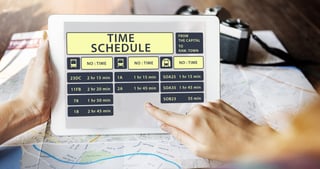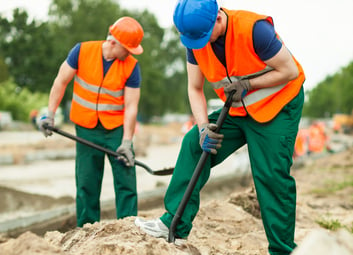Whether you’re a school administrator or transportation director, you should be concerned about your school’s bus routing system. While choosing the right bus route can save your students time and ensure safe transportation, failure to consider better transportation routes can cause delays and may even be dangerous.
What affects a school bus route and where should your bus route be placed for maximum safety?
There is no perfect bus route because it is impossible to eliminate every possible hazard on the road. As a transportation director, you can weigh the risks of potential routes and choose the one that presents the least danger to both your fleet and students.
First and foremost, bus routes should be safe. However, they should also be efficient — after all, you want your students to arrive at school and home on time. Finding a balance between safety and efficiency is essential when searching for the best routes for your fleet.
Some tips on finding the best bus route
-
Try to avoid multi-lane roads

that put pedestrians at a higher risk of injury
-
Select routes on roads with lower speeds and lower traffic volume
-
Pick roads that have sufficient pedestrian sidewalk space
-
Avoid or limit stops that require your buses to make left turns on their journey
-
Whenever possible, avoid routes that cross railroad tracks
It is important to recognize that many schools have policies specifying the maximum distance permitted between a student’s home and their school bus stop. This practice may vary with the age of passengers, and maximum distance requirements can make ideal bus routes harder to find. In these cases, computer software can be used to help determine the ideal route in a limited geographical area.
Sometimes school bus routes need to be updated
In a perfect world, you could simply select the safest bus routes for your school and be done. In reality, numerous factors can change over time and may increase or decrease the safety of a route. As the transportation director of your school, you should be aware of such changes and be ready to update your fleet’s routes when necessary.
Here are a few situations that may require route updates:
Construction: Construction on a road or near a bus stop can make an otherwise perfect route unsafe and inconvenient.  The moment you know of new construction along a bus route, you should get answers to the following questions:
The moment you know of new construction along a bus route, you should get answers to the following questions:
 The moment you know of new construction along a bus route, you should get answers to the following questions:
The moment you know of new construction along a bus route, you should get answers to the following questions:-
How long will the construction take place?
-
Will the construction increase traffic volume along the route?
-
Are there safer alternative routes?
Whenever possible, avoid routes that have construction going on — building projects increase route danger for many reasons, including falling debris, rubbernecking drivers, unfamiliar detours, and low road visibility due to dust and equipment.
 Speed change: In an effort to alleviate traffic, civic leaders may determine that a speed limit change is needed on roads along your bus routes. If there is a substantial speed increase (10 mph for example), you may want to search for safer routes. Try to keep your fleet off
Speed change: In an effort to alleviate traffic, civic leaders may determine that a speed limit change is needed on roads along your bus routes. If there is a substantial speed increase (10 mph for example), you may want to search for safer routes. Try to keep your fleet off Weather hazard: You may have a bus route that’s perfectly safe eight months of the year, but a nightmare in the wintertime. Bus routes close to rivers, streams, and bridges should be closely monitored in the colder months to ensure ice hazards do not exist.




